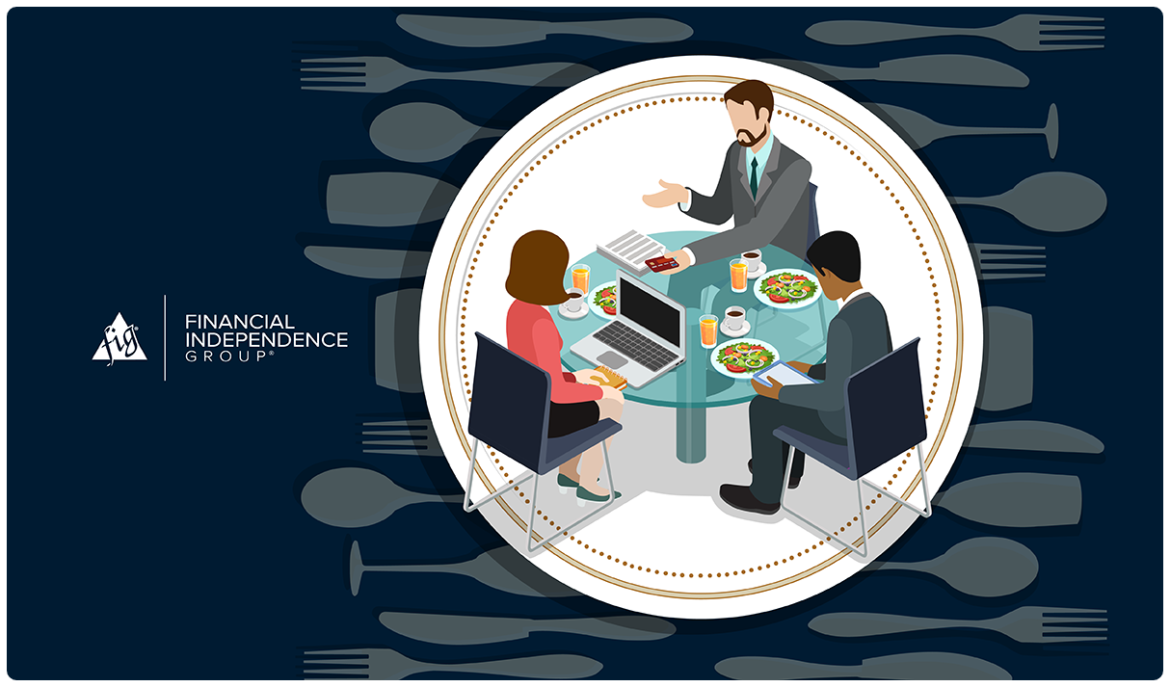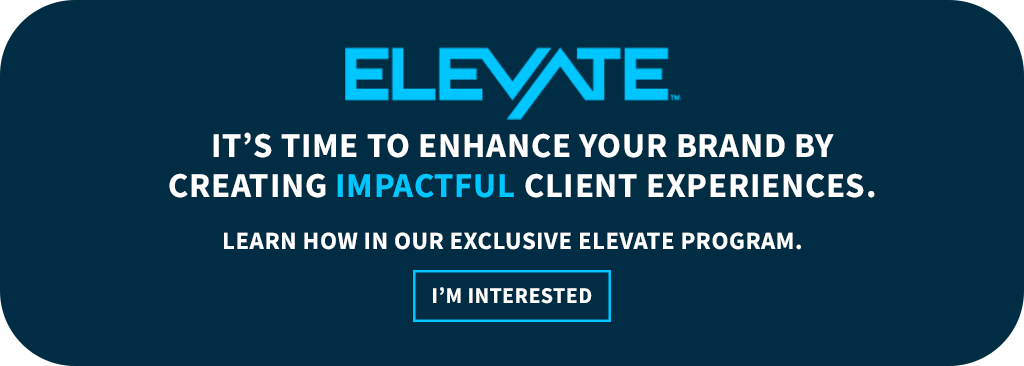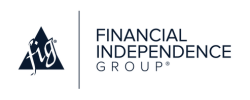Updated October 18, 2024, at 2:12 PM
Dinner seminars for financial advisors have long been a successful marketing technique used by financial professionals across the country. And while we must embrace certain digital and virtual options to attract prospects, in-person events are still necessary to appeal to those who prefer to learn and buy in a more traditional way.
Let’s dive into some dinner seminar FAQs, planning timelines to adhere to, and other best practices for your dinner seminars that can drive more attendees and land new business.
Let’s get started.
Best Practices FAQs for Financial Advisor Seminars
1. Should I target the public or my existing database?
Both. Seminar marketing is a tricky initiative to master. With that in mind, you may decide to try your first few seminars on your existing database (clients and prospects already in your CRM). This will allow you to sharpen your sword and enhance your skills before going live to the public.
Once you’ve mastered live presenting, you’re ready to promote them to the public. However, we still recommend you promote it to your clients, existing prospects, and referrals to broaden your audience.
2. What marketing strategies should I use to promote my seminar?
Direct mail and digital marketing are tried-and-true. Traditionally speaking, live events should be promoted with physical mailers sent through a professional mail house.
Digital promotional efforts such as social media or search engine ads should be considered supplemental efforts but generally don’t have the same results as mailers.
3. Should I offer an on-demand webinar option for my in-person event?
It depends. There are positives and negatives to offering a virtual attendance option to a traditional in-person event.
Positives
- For states with harsh weather, offering a virtual option can serve as a backup if the event is canceled due to heavy rain or snow (so there’s no need to reschedule for a later date)
- For those still uncomfortable with public gatherings due to COVID-19, you’re able to capture them as a lead still while you can’t by only offering in-person attendance
- For those unable to make your event due to a scheduling conflict, you’re able to capture them as a lead still regardless of scheduling conflicts
Negatives
- You run the risk of having low in-person registrations because you’ve offered an easier path to learning with virtual attendance
- You’re likely to have a higher no-show rate because registrants may decide last minute to no longer attend, knowing they’re able to attend virtually later on
4. How much does it cost to run a dinner seminar?
On average, a set of two dinner seminars runs around $8,500. This price includes working with a mail house to design, print, and mail your invitations. It also covers the 24/7 reservation service and the cost of food for both nights.
Of course, the mailer type, number of mailers, and the restaurant can drastically increase or decrease this average cost.
5. How long should my seminar last?
The rule of thumb is no more than one hour of presenting time and no more than two hours total to keep your audience engaged. However, the quality of seminar material, subject matter, and calls to action can alter the seminar’s length.
Related: 4 Tips for Getting More Referrals at Your Social Events
6. What are the best days and times to host seminars?
Our research has shown that Tuesday and Thursdays nights are most effective, but Wednesdays can also work quite well.
Here are some general guidelines for times to start your seminar:
- 5:30 or 6:00 PM start for low-traffic areas
- 6:00 or 6:30 PM start for high-traffic areas
- 12:00 PM start for targeting retired demographics or for small business owners who are able to attend during lunch
7. What are some key performance indicators to look for to consider my seminar successful?
- Response rate: Anywhere from 0.4-1% assuming you follow all best practices
- No-show rate: 15-20% on average from mailers, up to 60% from social media or search engine ads
- Appointment-setting rate: The goal is 50%, but the average is about 40%
- Closing rate: 30% for those who come to your office for a first appointment, and about 50% if the attendee was a referral
- Average assets: An average household is about $500,000, but it depends on the insurance and AUM split
Tips for Promoting Your Dinner Seminar
Here are some tips to consider when you’re planning your next dinner seminar to help ease your responsibilities while increasing the likelihood of your event’s success.
Hire or Work With a Professional Partner
Services like our own All Points Media (APM) marketing team or professional mail houses are trained to execute the entirety of your seminar campaign, including the initial strategy, creative design, strategy implementation and maintenance, and tracking.
Doing this yourself can be cumbersome and is much more likely to produce lower results than working with a professional. Your selected professional partner will provide best practices regarding subject matter, mailer and ad copy, targeting filters, and deployment. You won’t have to lift a finger!
If you’re currently working with a mail house that you like and are seeing success, we don’t need to switch. If you’re partnered with APM, reach out to your marketing strategist to see how we can help you determine partners that best align with your objectives.
Try Out Supplemental Methods
Even though mailer promotion is the primary effort for getting the highest number of registrations to your seminar, there are other routes to take to increase attendance.
If you choose to work with a professional partner, they’ll most likely handle 100% of your mailer and advertising efforts. However, there are supplemental efforts you can consider:
- Use media like radio, TV, and podcast appearances or commercials
- Add the event to your website’s home page and event page
- Add awareness by posting on your social media channels a few times leading up to the event
Related: Building Your Brand: Content Promotion Tips for Financial Advisors
Utilize Your Current Database
Promoting your dinner seminar to your existing database is essential to engage your already-warm audience. This not only helps create more retention with clients but also generates new referrals. Here are a handful of promotional efforts you can consider:
- Implementing a three-part email series (save the date, formal invite, last call) to drive attendance
- Cross-promote your seminar at other public events
- Include your upcoming events in flyers, first appointments, new client, and referral kits
- Frame a list or print a poster of your upcoming events in your office
- Record your phone system’s hold music to include upcoming seminar dates
- Launch a call or text campaign to your top prospects
Seminar Presentation Tips
Some professional partners have pre-made presentations you can use, but it’s important to customize any presentation to your brand and presenting style. Here are two considerations to include in your presenting strategy.
Effective Visual Aids
In your PowerPoint, it’s important to have a darker background with lighter text since people pay attention to the lightest part of the screen (which should be your content).
Make each slide a mini advertisement for your brand. Include your logo, tagline, or both on every slide. You should also include an intro slide with the presentation’s title and an outro slide that includes your logo, tagline, contact information, and any disclosures needed from compliance.
Connect With Your Audience on a Deeper Level
The goal of any seminar presentation is to build relationships and to help your clients feel educated, not confused.
Try using simple language and avoid technical jargon that people outside the financial industry wouldn’t necessarily understand. Doing this makes it easier for your audience to grasp your message. Remember, there are four essential parts to a presentation: Heart, Head, Hands, and Heart (again).
Heart: Provide an emotional approach to connect with your audience so they feel that you’re just like them. Be ordinary, feel their pain points, show compassion, and explain how your mission can solve the problems that they have.
Head: Provide useful content and educate your audience to invoke their logical decision-making. Include calls to action (CTAs) in your presentation that clients can do quickly, and ones that take longer to implement.
Short CTA: Go to this website, use this online tool, get this free report.
Long CTA: Think about budgeting, start planning for taxes, use practical saving habits.
Also, be sure to allude that there are wrong ways to do things. Three words that you should use are “When implemented correctly…”
This naturally gets the point across that they need a financial professional like you so they never want to try to do things on their own.
Related: How to Attract High Net Worth Clients for Wealth Management
Hands: Provide a tactical close to your presentation for those that don’t make decisions based on emotions.
Tell them what you want them to do next and how you want them to do it. Doing this is vital to close tactical learners and decision-makers. Make sure this type of language is used throughout your presentation and not just on one slide.
Heart: Lastly, provide one more emotional pull for those attendees who don’t always make decisions based on logic. Use emotion-based terminology like “You deserve a happy retirement” to appeal to their feelings and realize that they do need your support to help make them happy.
Final Thought on Hosting Dinner Seminars
While this is by no means an all-encompassing guide (but you can get one on Marketplace One if you’re partnered with us), these dinner seminar tips will help you improve your presentation’s effectiveness and your results.
In-person dinner seminars are a hot and proven strategy that you can use to build up your book of business.
Keep Reading: Webinar Best Practices for Financial Advisors
For Financial Professional Use Only – Not for Use with the Public


